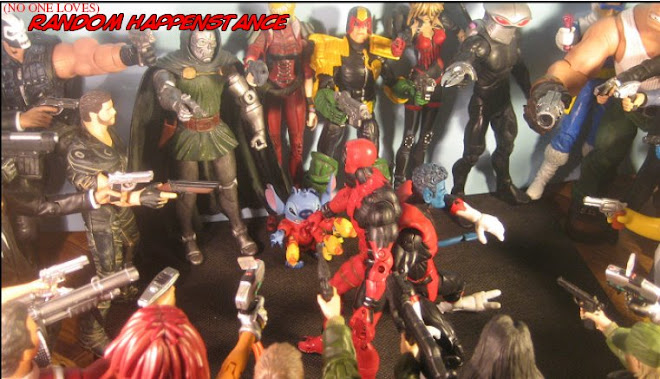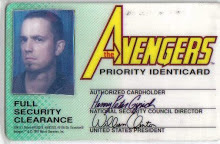It's the middle of the goddamn night, on what's probably going to be the coldest day of the year: I turned the heat up, maybe not too much, but more than usual. So, if I'm up, might as well get some posts done, and I know I mentioned this one a while back: from 1987-88,
Silverblade #1-12, written by Cary Bates, pencils by Gene Colan, inks by Klaus Janson and Steve Mitchell.
I was pretty excited to get this one from the quarter bins at my main comic shop in one fell swoop; since it was a 12-issue series: I had seen issues here and there over the years, but never put it together.
Gene Colan is of course a legend, probably best known for
Tomb of Dracula, but I misrembered
Cary Bates for a bit, confusing him with old
Warlord writer Cary Burkett; despite the fact that if you search "
Cary Bates" on this blog we've seen a
ton of comics from him! Something that struck me as odd: the first issue of
Silverblade came out May 19, 1987; per the GCD. The checklist on the editorial
Meanwhile... page includes
Watchmen #12, which didn't hit stands until July 28? Looks like
Watchmen #11 came out May 19; so either there's a typo, or the series slipped in shipping. How many comics fans today ever read
Watchmen in singles, though? I myself only had one random issue! Anyway, I mention that, because of course
Watchmen has been collected and republished a gazillion times, while
Silverblade has yet to be collected at all. Which isn't maybe as surprising as I thought: DC's probably better about that than Marvel, but there's a fair amount of oddball titles from the mid-to-late 80's that haven't been collected in trades.
Lords of the Ultra Realm, that never got a trade; and I swear the characters from that,
and Watchmen, are both in DC's
Who's Who: Update '87. Silverblade, is not; or at least doesn't get a proper full-page entry.
I'm nattering on, partially because I'm still chewing the book over in my mind:
Silverblade has it's moments, it's not uninteresting, but is it any good? I didn't love it wholeheartedly--Greg Burgas over at
Comics You Should Own did a pretty glowing write-up on it. For me, it's close: it does some things very well, like the first issue setting up the main character, Jonathan Lord, a faded actor turned recluse and crank. Bobby Milestone, former washout child actor, shuffles along as Lord's gopher; there's a remake set in space coming for Lord's biggest film,
the Silver Blade; and someone might be plotting to murder Lord...or worse, if they can think of it. While Lord had done 102 films, he had been withdrawing into them, himself, and his secluded mansion for years; and Bobby was slowly but surely getting sick of his crap. After he storms out, Lord makes a plea to be what he was before; a plea that is answered by a mysterious voice, as he's wrapped up in film.
Bobby is kidnapped by Vermillion, who has nursed a grudge against him and Lord for 47 years: Bobby had been sick a day during filming of
the Silver Blade, so Vermillion had jumped at the chance to make some money--for his dancing lessons!--by doing a stunt shot for him. Unfortunately, a net broke, and he took a nasty fall, that ended his dancing career before it even began; but honestly, he probably wasn't going to be the next Fred Astaire. Was there a next Fred Astaire? Vermillion had a stroke of inspiration: basically a snuff film, but with better costumes and production values. He wasn't expecting a new guest-star, as first a monster, than the Silver Blade himself, appear to take out Vermillion's goons and rescue Bobby. Who has no idea why his boss is a young man again, or seems to have a talking falcon...? (There are references to
the Maltese Falcon, but less about the film than the actual, literal object?)
Later issues have text pieces, filling in backstory from the golden age of Hollywood and Lord's films: he did a lot of genre pics, so there were a few monsters and whatnot in there to keep it interesting, and Lord could turn into any one of his old roles. And, between that, Vermillion's quest for vengeance, and Lord maybe learning to not be a jerk again; that felt like enough hooks for the series to me? Especially since the retro-Hollywood stuff seemed so well-researched. But then there comes a mystic bird, an earlier version of Silverblade, and a bunch of New Age-y metaphysics and spirits and ancient civilizations that didn't do much for me: they could've left it at "Jonathan Lord tapped into the power of film," now adventures. (Vermillion's plot just sputters out, and he's given a completely unearned happy ending; he'd committed at least a couple murders.)
If I sound disappointed, it's just there were directions this maybe could've gone, that are brought up and seemingly just dropped: Lord and Bobby's relationship is open to investigation, for instance. Lord gives him a job, sure, but it also feels condescending and weird, like he needed someone to idolize him; and Bobby already felt like he'd wasted his life, so how would he feel when Lord gets a second chance? Also, Lord turns into Dracula around #6; largely because Colan can draw the crap out of that and to set up a cliffhanger; but he also turns a young woman into a vampire, and at the end of the series she's made Lord's housekeeper and fixed up with blood to drink...like that was a happy ending? All better? I don't think the series did a great job with female roles, and Lord's attitudes towards sex seem old-fashioned, in a way that echoes movies of his time but probably wasn't realistic at all.
I also thought
Silverblade was mentioned more often in the DC universe, even though this isn't set there; but that was Colan's
Nathaniel Dusk, which is referenced in
Doomsday Clock. OK, Silverblade might've dodged a bullet there. But his series doesn't quite do it; and will probably continue to just be a weird little Easter egg DC fits onto theatre marquees or background movie posters. Eh, maybe that's not a terrible legacy; the comics equivalent of Lord's films still playing on late shows or second-run theatres.






No comments:
Post a Comment